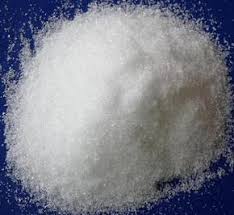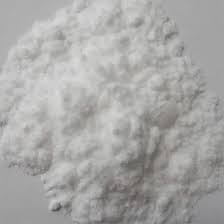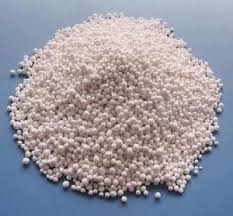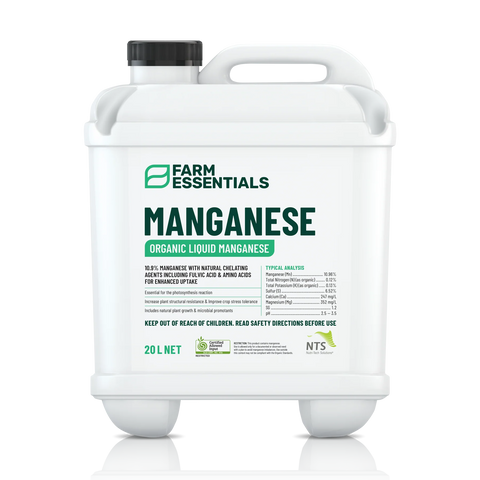
ProductDrop
Molybdenum (Mo) is a vital trace mineral for crops and pastures, required in small amounts but essential for key plant processes. In New Zealand (NZ), where certain soils can be molybdenum-deficient, its application can significantly boost productivity. Below is a concise overview for a grower, including deficiency symptoms and NZ-specific references.
Benefits of Molybdenum to Crops and Pastures
-
Improves Nitrogen Fixation in Legumes:
-
Molybdenum is a component of the enzyme nitrogenase, which enables legumes (e.g., clover, lucerne, peas) to fix atmospheric nitrogen.
-
In pastures with legumes, this increases natural nitrogen supply for grasses, reducing fertilizer needs.
-
Result: Higher pasture yields, better forage quality, and cost savings on nitrogen fertilizers.
-
-
Enhances Nitrogen Metabolism:
-
Molybdenum is essential for nitrate reductase, an enzyme that converts nitrate into usable forms for protein synthesis.
-
In crops like brassicas, wheat, or maize, it ensures efficient nitrogen use, supporting growth.
-
Result: Improved crop productivity and healthier plants.
-
-
Boosts Pasture Productivity:
-
In NZ’s pasture-based systems, molybdenum supports legume growth, leading to denser swards and faster regrowth after grazing.
-
Result: Increased dry matter production and better carrying capacity for livestock.
-
-
Improves Crop Yield and Quality:
-
Molybdenum enhances seed and fruit development in crops like peas, beans, and brassicas.
-
In vegetables like cauliflower, it prevents quality issues like whiptail.
-
Result: Higher yields and better-quality produce for market.
-
-
Corrects Deficiency in NZ Soils:
-
Molybdenum deficiency is common in NZ’s acidic soils (pH < 6.0), such as those in the South Island (e.g., Southland, Otago) and parts of the North Island.
-
Applying molybdenum (e.g., as sodium molybdate) addresses this, improving nutrient availability.
-
Result: Prevents yield losses and ensures consistent productivity.
-
-
Enhances Stress Tolerance:
-
Molybdenum supports overall plant health, helping crops and pastures withstand stresses like drought by aiding nitrogen metabolism.
-
Result: More resilient plants, leading to stable yields under NZ’s variable conditions.
-
Deficiency Symptoms of Molybdenum in Crops and Pastures
Molybdenum deficiency shows distinct symptoms, often more pronounced in NZ’s acidic soils:
-
Pale or Yellow Leaves: General chlorosis in leaves, especially in legumes like clover or crops like cauliflower, due to impaired nitrogen metabolism.
-
Stunted Growth: Plants exhibit slowed growth and reduced vigor, particularly in legumes and brassicas.
-
Whiptail in Brassicas: In crops like cauliflower or broccoli, leaves become narrow, distorted, and “whip-like,” a common symptom in NZ.
-
Poor Legume Performance: In pastures, clover growth is sparse, reducing nitrogen fixation and overall pasture productivity.
-
NZ-Specific Observations: Research from Lincoln University in Canterbury has documented molybdenum deficiency in clover and brassicas on acidic South Island soils, leading to pasture yield reductions of 15–20% and crop losses of up to 25% if uncorrected.
Practical Impact on Yield with NZ References
-
Pastures: In NZ, applying molybdenum to deficient pastures can increase nitrogen fixation by 100–200 kg/ha/year, boosting dry matter production by 10–20%, as noted in trials in Southland by AgResearch.
-
Crops: Studies by Plant & Food Research show that correcting molybdenum deficiency in brassicas and legumes can increase yields by 15–25%, particularly in Otago and Southland.
-
NZ Context: Molybdenum deficiency is a well-known issue in NZ, especially in acidic, highly weathered soils in the South Island, according to the NZ Ministry for Primary Industries (MPI). It’s often exacerbated by low soil pH and high rainfall, which leach molybdenum from soils.
Application Tips
-
Soil Testing: Test soil pH and molybdenum levels, as deficiency is common in NZ soils with pH < 6.0.
-
Liming: Raise soil pH with lime (to 6.0–6.5) to improve molybdenum availability naturally.
-
Application Methods: Use molybdenum fertilizers like sodium molybdate as a seed treatment (10–20 g/ha) or foliar spray (50–100 g/ha).
-
Timing: Apply before planting or early in the growing season to support nitrogen fixation and growth.
-
Caution: Avoid over-application, as excess molybdenum can be toxic to plants and grazing animals (e.g., causing molybdenosis in ruminants).
By addressing molybdenum needs, you can enhance nitrogen efficiency, plant health, and productivity in both crops and pastures, particularly in NZ’s molybdenum-deficient soils. If you’re working with a specific crop or region in NZ, I can provide more targeted advice!
We Also Recommend





